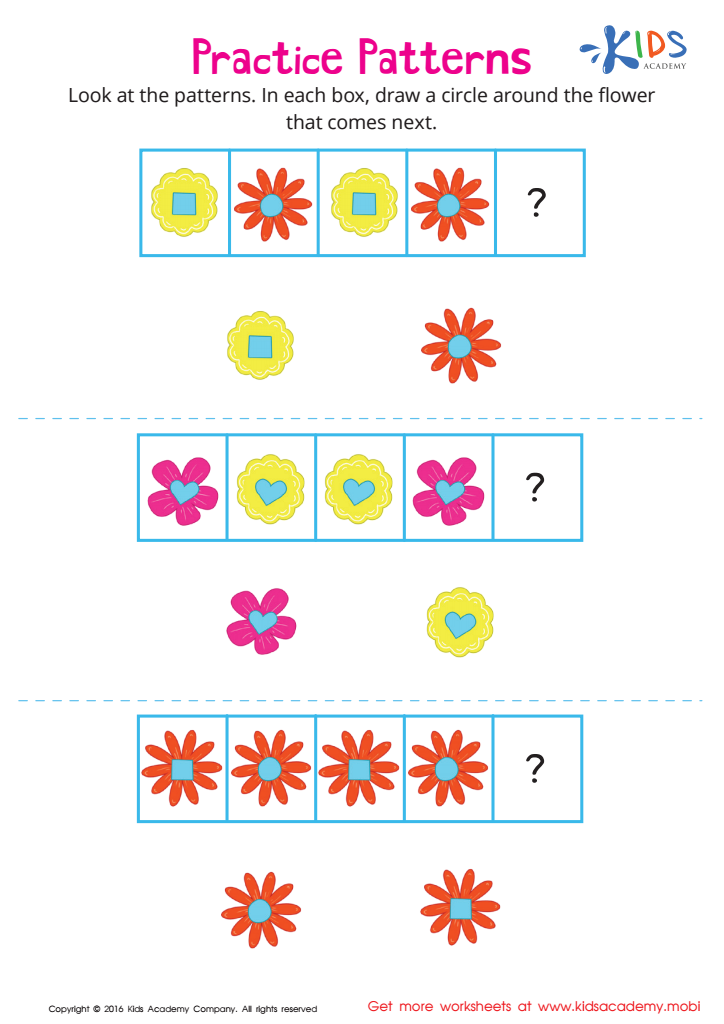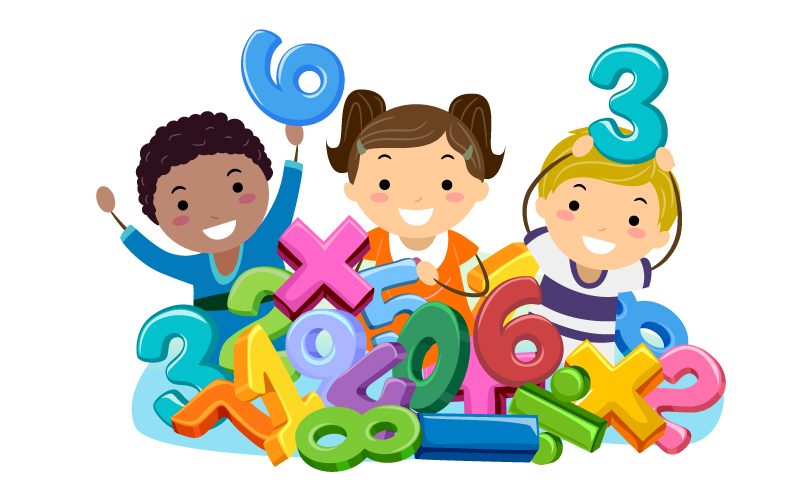Normal Patterns Worksheets for Ages 3-9
5 filtered results
-
From - To
Discover our engaging collection of Normal Patterns Worksheets for children ages 3-9! These worksheets are expertly designed to nurture early mathematics skills through fun and interactive pattern activities. Perfect for preschoolers, kindergartners, and early elementary students, our worksheets help children recognize, continue, and create various patterns using shapes, colors, and objects. These exercises not only enhance critical thinking and problem-solving abilities but also build a strong foundation for future math success. Ideal for home or classroom use, our printable sheets make learning patterns an enjoyable experience. Unlock your child’s potential with our excellent resources today!
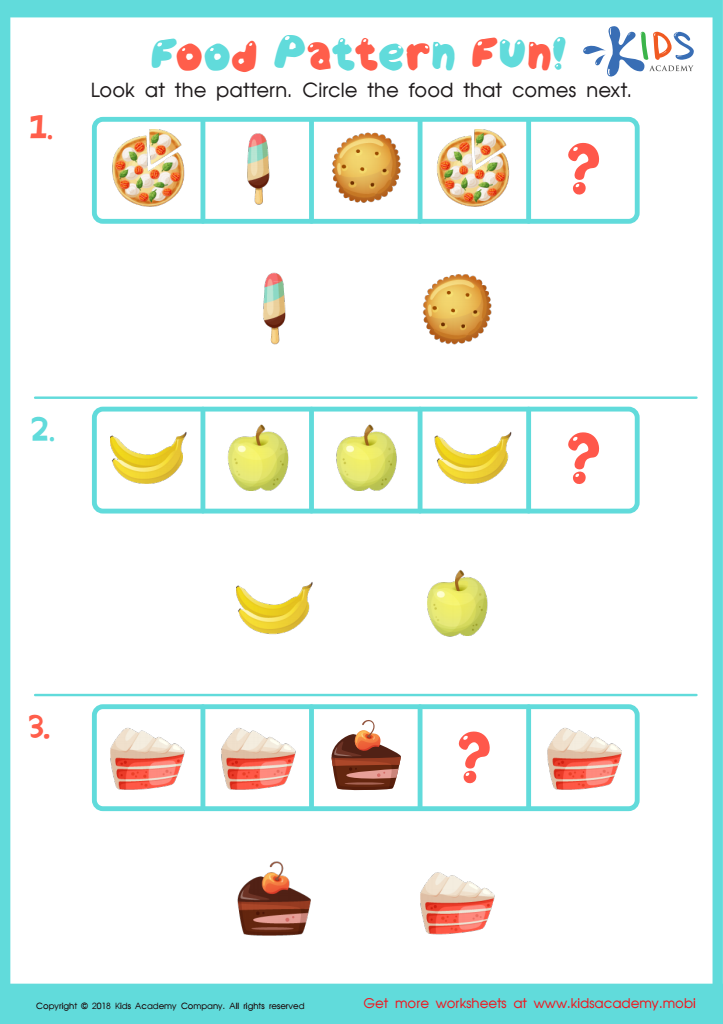

Food Pattern Fun Worksheet
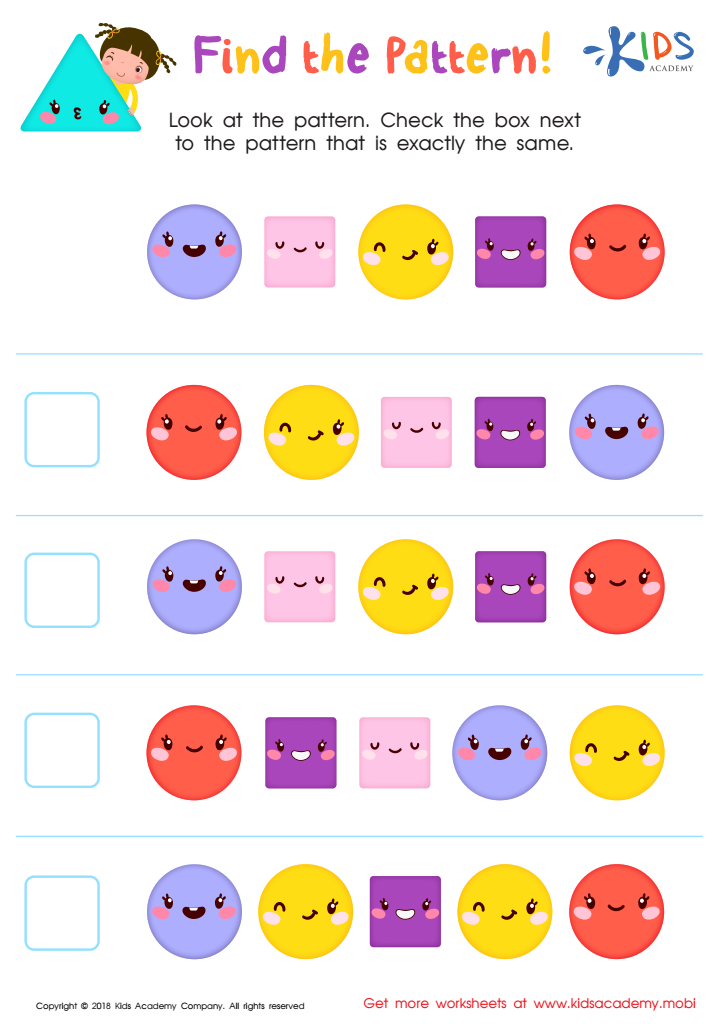

Find the Pattern Worksheet
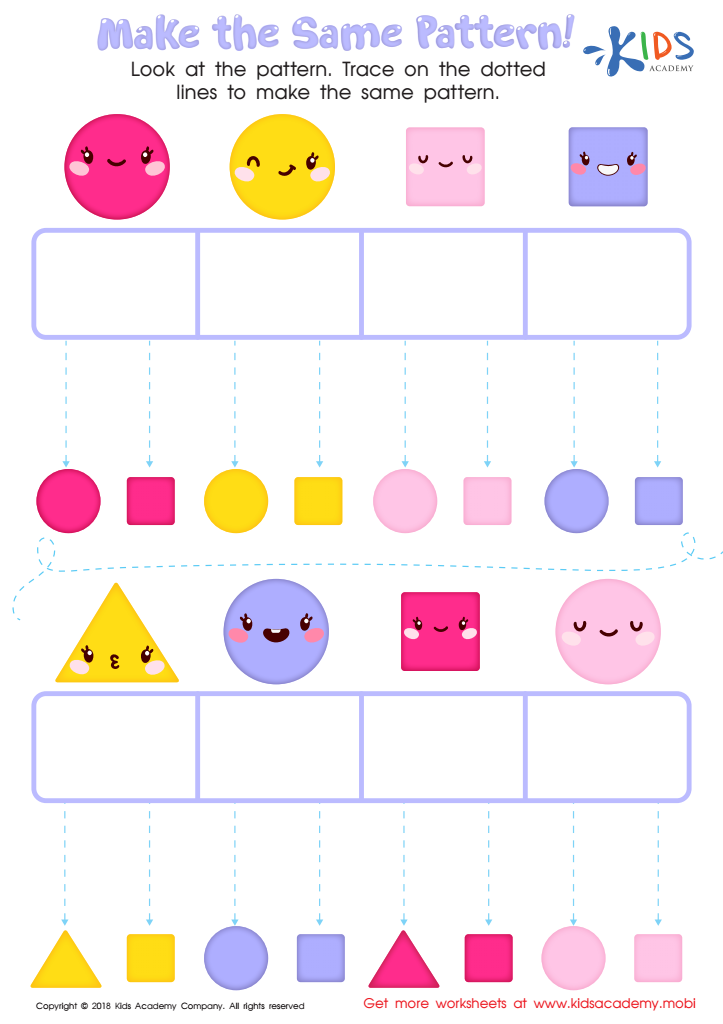

Make the Same Pattern Worksheet


Shape Pattern Fun Worksheet
Understanding normal developmental patterns for ages 3-9 is crucial for both parents and teachers, as it helps support the child's growth academically, socially, and emotionally. During these formative years, children experience rapid changes in various domains – cognitive, linguistic, motor, and social. By recognizing typical age-related milestones, adults can provide appropriate resources, environments, and interventions to nurture these developments effectively.
Children aged 3-9 develop core skills like language acquisition, literacy, and numeracy, which form the foundation for future learning. Early intervention, when delays or atypical patterns are noticed, can significantly improve outcomes. Parents and teachers equipped with knowledge about normal developmental patterns can distinguish between a child who is simply maturing at a different rate and one who might need additional support.
Additionally, understanding these patterns allows for better classroom management and tailored instruction. Recognizing that five-year-olds naturally have shorter attention spans than older children, or that eight-year-olds are beginning to grasp complex problem-solving, enables teachers to devise lessons that are both engaging and appropriately challenging.
Socially and emotionally, supporting children as they develop skills like empathy, cooperation, and self-regulation is vital. This ensures that they not only succeed academically but also build healthy relationships and emotional resilience. Overall, being attuned to normal developmental patterns fosters an environment in which children can thrive confidently and fully.
 Assign to My Students
Assign to My Students
